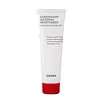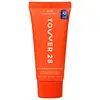What's inside
What's inside
 Key Ingredients
Key Ingredients

 Benefits
Benefits

 Concerns
Concerns

 Ingredients Side-by-side
Ingredients Side-by-side

Propolis Extract
Skin ConditioningAloe Barbadensis Leaf Water
MaskingCamellia Sinensis Leaf Water
MaskingButylene Glycol
HumectantCetyl Ethylhexanoate
EmollientGlycerin
Humectant1,2-Hexanediol
Skin ConditioningNiacinamide
SmoothingHydroxyethyl Acrylate/Sodium Acryloyldimethyl Taurate Copolymer
Emulsion StabilisingCyclomethicone
EmollientCetearyl Olivate
Betaine
HumectantCetearyl Alcohol
EmollientSorbitan Olivate
EmulsifyingPanthenol
Skin ConditioningEthylhexylglycerin
Skin ConditioningAllantoin
Skin ConditioningXanthan Gum
EmulsifyingDimethicone/Vinyl Dimethicone Crosspolymer
Skin ConditioningSodium Hyaluronate
HumectantArginine
MaskingZinc PCA
HumectantBetaine Salicylate
AntimicrobialMentha Haplocalix Extract
MaskingMenthyl Lactate
MaskingCitric Acid
BufferingMelaleuca Alternifolia Leaf Oil
AntioxidantAsiaticoside
AntioxidantAsiatic Acid
Skin ConditioningMadecassic Acid
Skin ConditioningPropolis Extract, Aloe Barbadensis Leaf Water, Camellia Sinensis Leaf Water, Butylene Glycol, Cetyl Ethylhexanoate, Glycerin, 1,2-Hexanediol, Niacinamide, Hydroxyethyl Acrylate/Sodium Acryloyldimethyl Taurate Copolymer, Cyclomethicone, Cetearyl Olivate, Betaine, Cetearyl Alcohol, Sorbitan Olivate, Panthenol, Ethylhexylglycerin, Allantoin, Xanthan Gum, Dimethicone/Vinyl Dimethicone Crosspolymer, Sodium Hyaluronate, Arginine, Zinc PCA, Betaine Salicylate, Mentha Haplocalix Extract, Menthyl Lactate, Citric Acid, Melaleuca Alternifolia Leaf Oil, Asiaticoside, Asiatic Acid, Madecassic Acid
Water
Skin ConditioningGlycerin
HumectantCetyl Ethylhexanoate
EmollientCaprylic/Capric Triglyceride
MaskingPropanediol
Solvent1,2-Hexanediol
Skin ConditioningGlyceryl Stearate
EmollientCetearyl Alcohol
EmollientMicrocrystalline Cellulose
AbsorbentSodium Polyacrylate Starch
AbsorbentSclerotium Gum
Emulsion StabilisingTriolein
Skin ConditioningPotassium Cetyl Phosphate
EmulsifyingBehenyl Alcohol
EmollientAllantoin
Skin ConditioningCeramide NP
Skin ConditioningGlyceryl Dioleate
EmollientCellulose Gum
Emulsion StabilisingSodium Phytate
Pentylene Glycol
Skin ConditioningSodium Acetylated Hyaluronate
HumectantSodium Hyaluronate
HumectantSodium Hyaluronate Crosspolymer
HumectantHydrolyzed Sodium Hyaluronate
Skin ConditioningEthylhexylglycerin
Skin ConditioningWater, Glycerin, Cetyl Ethylhexanoate, Caprylic/Capric Triglyceride, Propanediol, 1,2-Hexanediol, Glyceryl Stearate, Cetearyl Alcohol, Microcrystalline Cellulose, Sodium Polyacrylate Starch, Sclerotium Gum, Triolein, Potassium Cetyl Phosphate, Behenyl Alcohol, Allantoin, Ceramide NP, Glyceryl Dioleate, Cellulose Gum, Sodium Phytate, Pentylene Glycol, Sodium Acetylated Hyaluronate, Sodium Hyaluronate, Sodium Hyaluronate Crosspolymer, Hydrolyzed Sodium Hyaluronate, Ethylhexylglycerin
 Reviews
Reviews

Ingredients Explained
These ingredients are found in both products.
Ingredients higher up in an ingredient list are typically present in a larger amount.
1,2-Hexanediol is a synthetic liquid and another multi-functional powerhouse.
It is a:
- Humectant, drawing moisture into the skin
- Emollient, helping to soften skin
- Solvent, dispersing and stabilizing formulas
- Preservative booster, enhancing the antimicrobial activity of other preservatives
Allantoin is a soothing ingredient known for its protective and moisturizingg properties. Because of this, it is often added to products with strong active ingredients.
Studies show higher concentrations of this ingredient can promote wound healing.
Though it can be derived from the comfrey plant, allantoin is produced synthetically for cosmetic products to ensure purity.
Learn more about AllantoinCetearyl alcohol is a mixture of two fatty alcohols: cetyl alcohol and stearyl alcohol. It is mainly used as an emulsifier. Emulsifiers help prevent the separation of oils and products. Due to its composition, it can also be used to thicken a product or help create foam.
Cetearyl alcohol is an emollient. Emollients help soothe and hydrate the skin by trapping moisture.
Studies show Cetearyl alcohol is non-toxic and non-irritating. The FDA allows products labeled "alcohol-free" to have fatty alcohols.
This ingredient is usually derived from plant oils such as palm, vegetable, or coconut oils. There is debate on whether this ingredient will cause acne.
Due to the fatty acid base, this ingredient may not be Malassezia folliculitis safe.
Learn more about Cetearyl AlcoholCetyl Ethylhexanoate is an emollient ester. It comes from cetearyl alcohol and 2-ethylhexanoic acid.
Cetyl Ethylhexanoate is an emollient that adds a velvety feel to skin without being greasy or oily. Emollients help trap moisture into your skin, keeping your skin soft and hydrated.
Ethylhexylglycerin (we can't pronounce this either) is commonly used as a preservative and skin softener. It is derived from glyceryl.
You might see Ethylhexylglycerin often paired with other preservatives such as phenoxyethanol. Ethylhexylglycerin has been found to increase the effectiveness of these other preservatives.
Glycerin is already naturally found in your skin. It helps moisturize and protect your skin.
A study from 2016 found glycerin to be more effective as a humectant than AHAs and hyaluronic acid.
As a humectant, it helps the skin stay hydrated by pulling moisture to your skin. The low molecular weight of glycerin allows it to pull moisture into the deeper layers of your skin.
Hydrated skin improves your skin barrier; Your skin barrier helps protect against irritants and bacteria.
Glycerin has also been found to have antimicrobial and antiviral properties. Due to these properties, glycerin is often used in wound and burn treatments.
In cosmetics, glycerin is usually derived from plants such as soybean or palm. However, it can also be sourced from animals, such as tallow or animal fat.
This ingredient is organic, colorless, odorless, and non-toxic.
Glycerin is the name for this ingredient in American English. British English uses Glycerol/Glycerine.
Learn more about GlycerinSodium Hyaluronate is hyaluronic acid's salt form. It is commonly derived from the sodium salt of hyaluronic acid.
Like hyaluronic acid, it is great at holding water and acts as a humectant. This makes it a great skin hydrating ingredient.
Sodium Hyaluronate is naturally occurring in our bodies and is mostly found in eye fluid and joints.
These are some other common types of Hyaluronic Acid:
Learn more about Sodium Hyaluronate